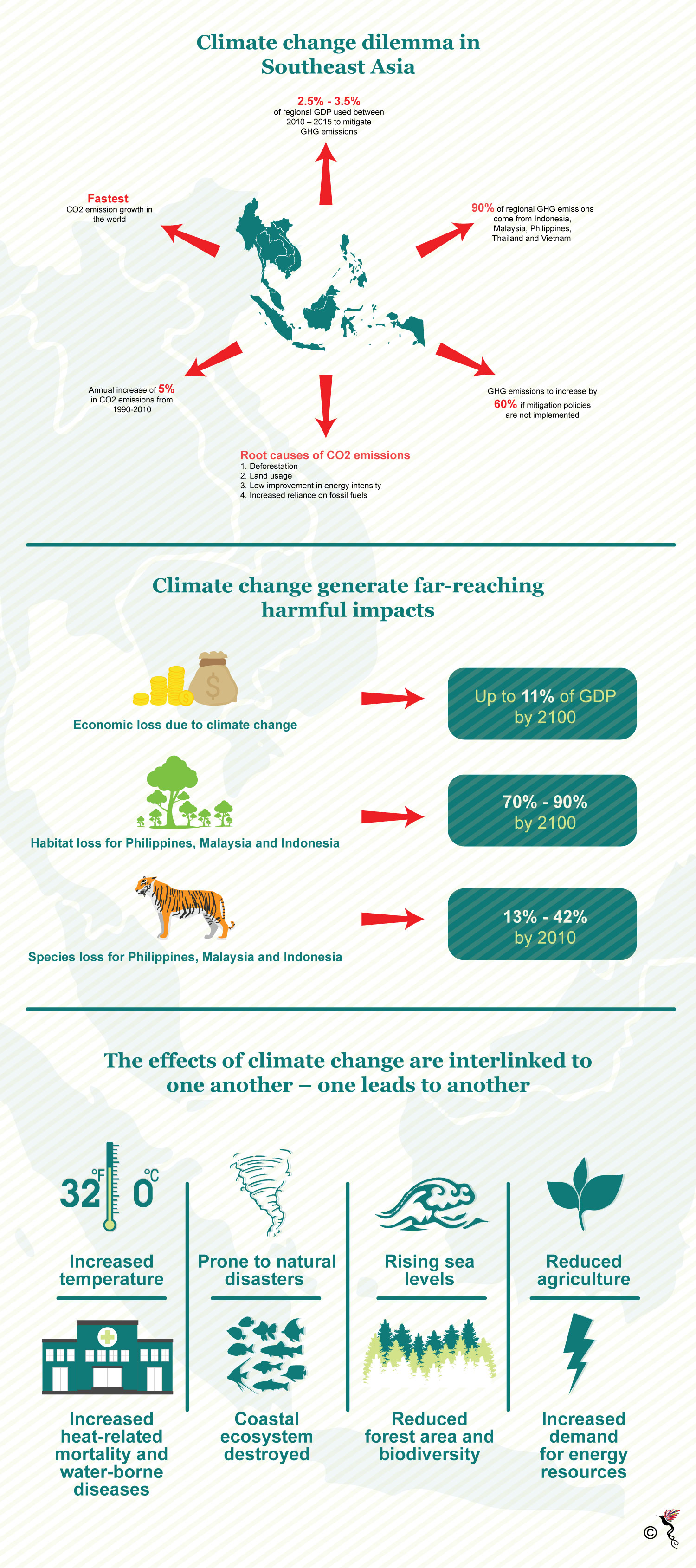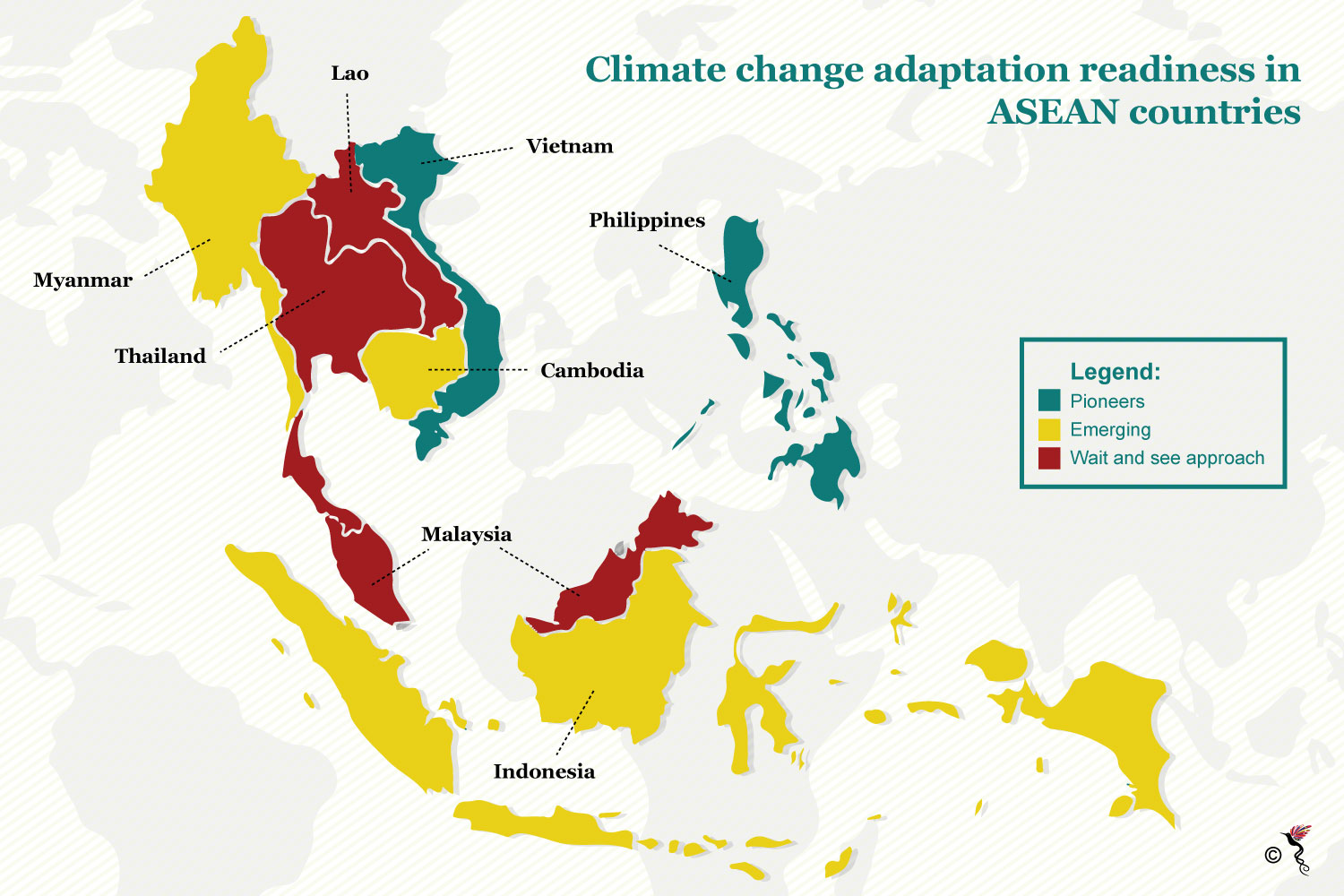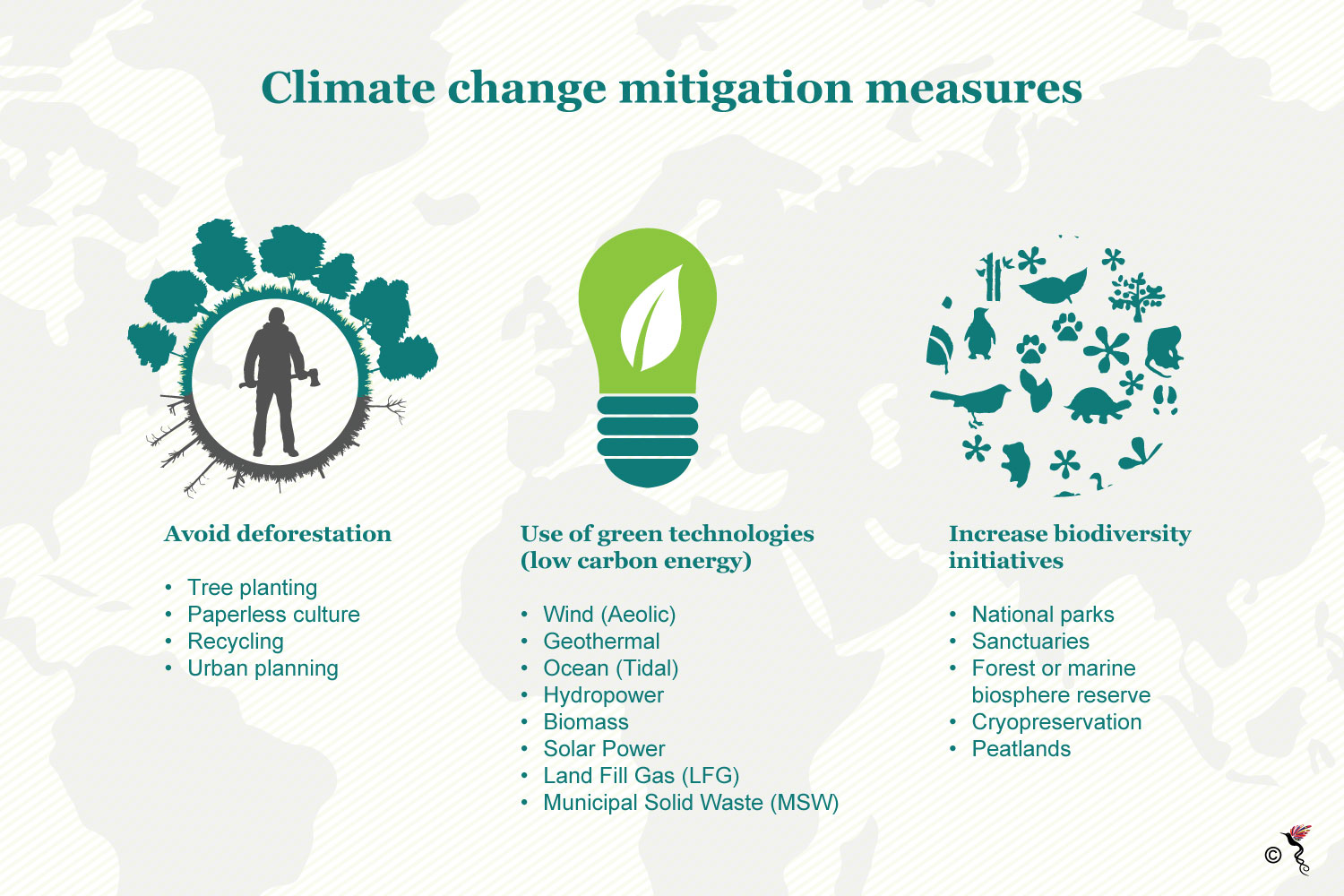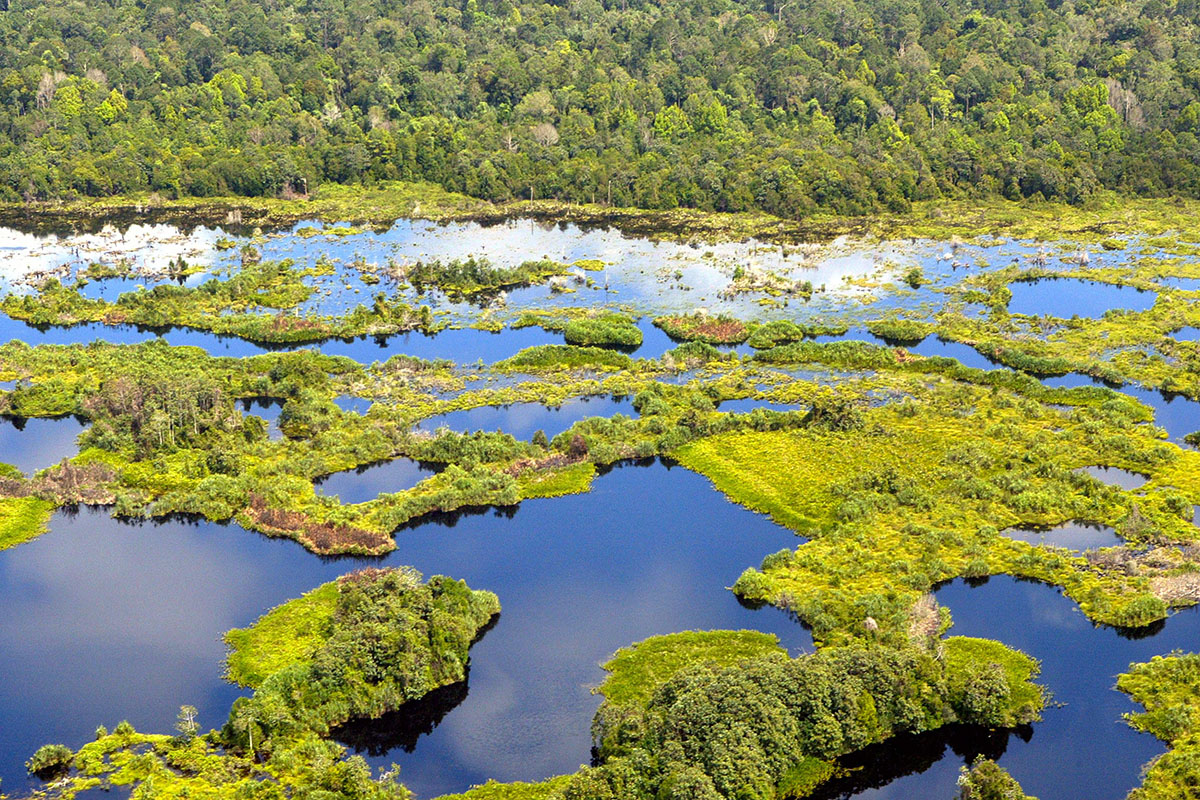As a serious issue that is gripping the ASEAN (Association of Southeast Asia Nations) region, climate change has unwittingly been overlooked by the association. By failing to give the same attention to the issue of climate change in the region as it has provided free trade agreements and economic integration, the association has set the region on an undesirable path, which could severely affect its future growth, reversing the gains it has derived out of economic developments and potentially degrade the quality of life of over 630 million people.
Considering that the Southeast Asian region is situated in an important maritime route that connects the East and the West, while most of the countries here have coastlines that cover vast areas of land such as Myanmar, Thailand, Vietnam, Malaysia, Brunei, Singapore, Indonesia and the Philippines, severe climate change and extreme weather conditions could spell trouble for many nations within the region. Most of the major cities within the region are also built close to important ports of their respective countries. The damages to these countries’ marine and forest ecosystems, economies as well as local communities are almost unimaginable if climate change and global warming is unresolved in the near future. Rising temperatures lead to intense heat which exposes the region to natural disasters such as floods, drought and torrential rain. Superficially, the effects of climate change can be dismissed as erratic weather disturbances, but these extreme weather conditions will also affect water sources that play a pivotal role in maintaining food supplies, health, industries and businesses, transportations, tourism, infrastructures (power and water supplies), homes as well as the economy of the ASEAN region in a sequence of events. The impact on the region’s GDP (gross domestic product) is more than what meets the eye.
The dangers of climate change
The impacts of escalating climate change can already be observed across ASEAN’s diverse geographical region – especially in the recent years – where several ASEAN countries have suffered from natural disasters such as drought, rise of sea level, heat wave, tsunami and typhoon. Indonesia and Thailand were hit by tsunami in 2004, the Philippines and Vietnam suffered from Typhoon Haiyan in 2013 while floods ravaged homes in northern Thailand in 2017. According to a study conducted by the ADB (Asian Development Bank) titled “Southeast Asia and the Economies of Global Climate Stabilisation,” the region is more vulnerable to the impacts of climate change based on three contributing factors: growing urban population, long coastlines, as well as high concentration of people and economical activities along coastal areas.

Climate change scenario in Southeast Asia
Climate change in Southeast Asia
ASEAN’s forest that supports countless wildlife species and forest ecosystems is among the many examples of natural habitats that are at risk of being damaged by climate change. According to the ASEAN Biodiversity Outlook report (published by ASEAN Centre for Biodiversity, Philippines), the biological diversity in the Philippines, Indonesia and Malaysia will be greatly eroded by 2100 if the destruction of the environment persists – where “the region is poised to lose 70 to 90 percent of habitats and 13 to 42 percent of species in another 83 years”. This report has been endorsed by the ASEAN Working Group on Nature Conservation and Biodiversity.
Climate change could also affect the health of many ASEAN citizens through diseases, smog and the shortages of freshwater. These pose an incalculable economic risk to ASEAN in the long run. According to the ADB, economic losses due to climate change can reach up to 11 percent of the regional GDP by 2100.
To prevent dangerous levels of global warming, which is a major contributing factor to climate change, governments should act by taking concerted action to reduce GHG (greenhouse gas) and CO2 (carbon dioxide) gas emissions.
Climate change adaptation readiness in ASEAN
A study titled "Climate Change Adaptation Readiness in the ASEAN Countries" prepared by the SEI (Stockholm Environment Institute) and commissioned by the ASEAN German Programme on Response to Climate Change in Agriculture and Forestry, reported that level of readiness in ASEAN varies across countries and much remains to be done in terms of mitigation and adaptation. The report has divided eight ASEAN countries into three categories: the pioneers, the emerging champions and the wait-and-see approach.

Climate change adaptation readiness categories in eight ASEAN countries.
The pioneers, Vietnam and the Philippines, see “adaptation as an urgent need and have implemented new institutional arrangements to address it – as natural disasters have acted as “focusing events” that stimulate climate change mitigation policy engagements”. In the Philippines, its geographical location is “highly susceptible to hydro-meteorological hazards and its vulnerability is exacerbated by poverty, making adaptation measures very important.” In Vietnam, “higher adaptation measures are driven by a recognition that the impacts of climate change in the country is severe and addressing them timely has potential co-benefits to its economy.” On the other hand, the emerging champions, Cambodia, Indonesia and Myanmar, are “taking new approaches to adaptation – as they have significant climate related sensitivities.”
Conversely, Lao, Malaysia and Thailand are adopting a “wait-and-see approach” in terms of adaptation. This shows that countries with “less exposure to disasters have tended to be complacent about adaptation, such that policies and programs in place are disjointed, weak or limited in impact.” The ASEAN member states have different experiences with adaptation, but collectively offer valuable lessons, insights and examples on how to prepare for and respond to the impacts of climate change.
Collective and on-going mitigation efforts
ASEAN has already addressed the issue of climate change in the ASCC (ASEAN Socio-Cultural Community) Blueprint. It is stipulated under Section D which is “Ensuring Environmental Sustainability” along with key of actions to be taken to address the impacts of climate change. Moreover, ASEAN established the AWGCC (ASEAN Working Group on Climate Change) in 2009 to implement the ACCI (ASEAN Climate Change Initiative) which is a consultative platform to enhance the region’s capability in implementing mitigation and adaptation measures. In fact, ASEAN has already made many instrumental progress, in terms of policies and institutions, to combat the climate change impact. The only thing missing is for ASEAN to take bold and clear actions on the matter. Establishment of related institutions alone are not enough to overcome the climate change impacts. ASEAN leaders should take up concrete, coherent, and unified actions to reduce the impacts of climate change, otherwise it could impede the goal of achieving a developed ASEAN Community by 2025.
“If governments implement measures and policies to reduce GHG and CO2 emissions, then ASEAN’s involvement in the Paris Agreement 2016 and ASEAN 2025 will be effective to help combat climate change. Governments in ASEAN must continue to work together and cooperate in terms of technology and information sharing,” wrote Senior Fellow of ISEAS Yusof Ishak Institute, Lee Poh Onn, in an email reply to The ASEAN Post.
The Paris Agreement is a global deal aimed at limiting the negative impact of climate change, which will include reducing GHG emission, that focuses on “eradicating poverty in order to keep a global average temperature rise to below 2°C above pre-industrial levels and limit the temperature increase to 1.5°C above pre-industrial levels.” GHG emissions are likely to be 60 percent higher in Southeast Asia in 2050 compared to 2010.

Climate change mitigation initiatives.
Climate change mitigation initiatives
The sooner we act to reduce GHG and CO2 emissions, the less severe will climate change impact the region. In addressing this issue, ASEAN should work together with other stakeholders such as NGOs, private and public entities as well as local governments to overcome the effects of climate change – and to ensure that the region implements the strategies and policies as a whole. ASEAN nations should reach a common ground in tackling the climate change issue although it might not be easy as each member state has its own priorities. Indonesia focuses heavily on mitigation measures and forest fire, the Philippines places its attention on adaptation measures while Singapore emphasises on issues pertaining to the rising sea level. Lee reassured that “governments in ASEAN must continue to work together and cooperate in terms of technology and information sharing.”
